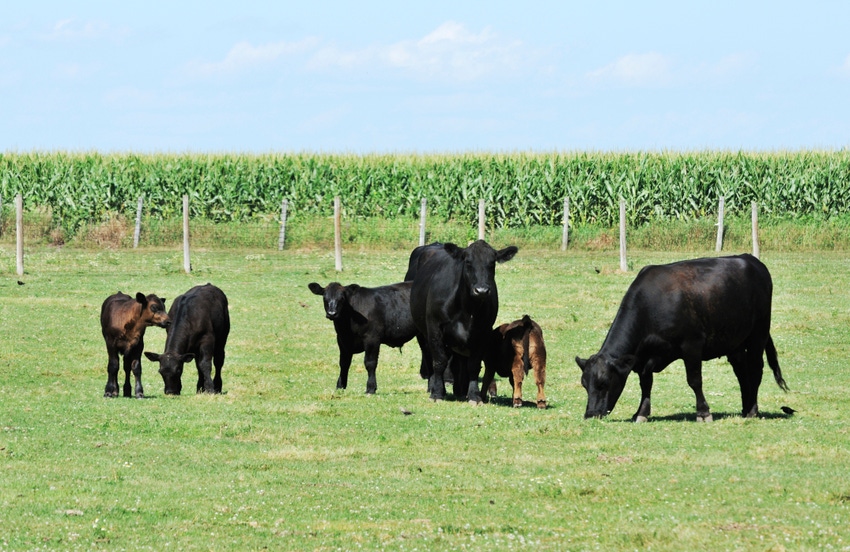Hay stocks significantly lower than last year's levels.
May 17, 2018

According to the Livestock Marketing Information Center (LMIC), pasture and range conditions opened this year’s season with 20% rated in poor to very poor condition -- the worst first week of the season since 2014.
U.S. Department of Agriculture data show that western states are rated 32% in poor and very poor condition, which LMIC said is the highest percentage of all the regions. The Great Plains and southern Plains reported 22% and 27% of pastures in poor and very poor condition. In the Corn Belt and the Northeast, conditions ranged from 10% to 20% poor and very poor. The Southeast was the only region that showed an improvement from year-ago levels.
“The southern Plains (Oklahoma and Texas) has been showing extreme drought conditions since the beginning of the calendar year,” LMIC noted. “That drought has intensified, covering most of western Oklahoma and the Texas Panhandle.”
The most recent drought monitor showed 14% of the land area in Texas is in extreme to exceptional drought. For Oklahoma, that number is closer to 35%.
LMIC said it is somewhat surprising that more of the southern Plains is not rated as being in poor to very poor condition. “It is important to note that the drought monitor shows a lack of moisture throughout the soil profile. Fair and good categories are reporting the southern Plains as 37% and 33%, respectively.”
According to LMIC, in the western region (Arizona, California, Idaho, Nevada, New Mexico, Oregon, Utah and Washington), 40% of pastures and ranges are in good to excellent condition, even though the area has lots of poor and very poor conditions as well.
“Drought has extended beyond the southern Plains and has covered large parts of Arizona, New Mexico and Utah,” LMIC said.
In contrast, the Pacific Northwest is showing very little sign of dryness, LMIC noted, adding, “Washington had only 2% of pasture in the two lowest categories and 56% in good condition.”
Diminished hay stocks
According to USDA, U.S. hay stocks as of May 1 were significantly lower, declining more than 8 million tons from last year -- a 36% reduction from the same period last year. Nationally, the figure is the lowest May 1 stock report since 2013, LMIC said.
“Nearly half of U.S. states saw declines of 30% or more in hay stocks. Those drops were not limited to drought areas,” it said.
Only 16 states had higher year-over-year stock levels.
LMIC reported that in the critical drought areas of Oklahoma and Texas, declines exceeded 50%, implying supplemental feeding as 2017 combined hay production declines were down only 11%.
Surrounding states also have seen large declines in inventory, LMIC said, adding that Louisiana was down 63%, Missouri fell 61% and Kansas fell 30%.
“In most of the U.S., tight hay stocks will support new-crop hay prices, at least in the near term,” LMIC said.
You May Also Like


.png?width=300&auto=webp&quality=80&disable=upscale)
